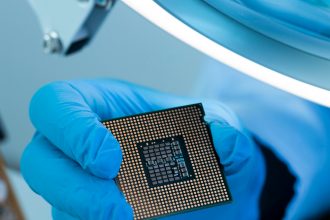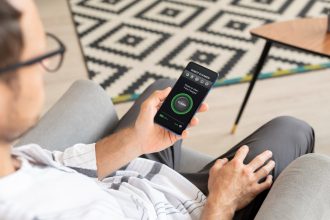Imagine a world where your devices can whisper secrets to each other through the air—without loudspeakers blaring, without blinking LEDs flashing, and without any visible signs of data exchange. Sounds almost magical, doesn’t it? But thanks to recent advances in acoustic data transmission technology, this is quickly becoming a reality. Forget what you think you know about sound; these innovative methods are rewriting the rules by using the very same principles of sound waves—frequency, amplitude, and phase—to send information silently, securely, and efficiently.
In this article, we’ll take a deep dive into how sound can travel without traditional speakers, explore some of the groundbreaking innovations behind this technology, and look at where it’s headed next. Whether you’re a tech geek, a scientist, or just curious about the future of invisible communication, you’ll find plenty of fascinating insights here.
Understanding How Sound Can Travel Without Traditional Speakers: The Science Behind Acoustic Data Transmission
Let’s start with the basics. When we think about sound, we usually picture vibrations traveling through the air and reaching our ears via loudspeakers or microphones. That’s how most of us experience music, podcasts, or voices—loud, clear, and audible. But what if sound could carry information without producing any noticeable noise? That’s precisely what acoustic data transmission aims to achieve.
The core idea here is to manipulate sound waves in very specific ways to encode data—think of it as creating a special “language” of sound that only certain devices can decode. These signals are often at frequencies outside the human hearing range (ultrasound) or are so subtle in amplitude that they remain inaudible. So, instead of shouting across a room, a device can send tiny, invisible “sound packets” to another device, which captures and interprets them.
This process hinges on several key properties of sound waves:
- Frequency: Different frequencies can carry different information. By changing the pitch, devices can embed data in sound waves that are inaudible to humans.
- Amplitude: The loudness of a wave can also encode data, with variations representing bits of information.
- Phase: The position of the wave within its cycle can be adjusted to squeeze even more data into the same sound wave.
These parameters are carefully controlled and modulated to create a “sound code” that a receiver equipped with specialized sensors can decode. This is akin to Morse code but via ultrasonic signals or other subtle vibrations, allowing data transmission without disturbing or alerting anyone.
How Devices Generate and Detect These Acoustic Signals
Generating these invisible sounds isn’t the same as playing music through your smartphone speaker. Instead, it involves specialized hardware such as piezoelectric transducers, ultrasound emitters, or micro-electromechanical systems (MEMS). These components can produce very precise sound waves at targeted frequencies, often above the range of human hearing (generally above 20 kHz).
Detection is equally sophisticated. Ultra-sensitive microphones, ultrasonic sensors, or other sensors pick up these high-frequency signals. The data is then extracted via digital signal processing techniques that distinguish the data-carrying signals from background noise or environmental interference.
A Closer Look: The Encoding Process
- Data conversion: The information to be transmitted is converted into a series of binary bits.
- Modulation: These bits are used to modulate the frequency, amplitude, or phase of the sound wave.
- Transmission: The modulated wave is emitted into the air via ultrasound or high-frequency sound sources.
- Reception & decoding: The receiving device detects the wave, demodulates it, and retrieves the original data.
The Advantages Over Traditional Wireless Technologies
You might be wondering: why bother with sound when Wi-Fi and Bluetooth are so ubiquitous? Well, acoustic data transfer offers some unique advantages:
- Security & Privacy: Since the signals are inaudible and often confined within the immediate environment, they’re harder for outsiders to intercept, making them ideal for secure communications.
- Low Power Consumption: Ultrasound transmitters and receivers can operate on less power than Wi-Fi modules, making them suitable for small IoT devices or sensors.
- Non-Interfering: Unlike radio waves, which can be affected by interference or require licensing, ultrasonic signals are less congested and more reliable in certain environments.
- Silent & Discreet: No noise or visible blinking LEDs—perfect for environments like hospitals, libraries, or confidential meetings.
- Enhanced Device Compatibility: These systems can work without needing network infrastructure or internet access, enabling “ad-hoc” device-to-device communication.
Real-World Applications Making Waves Today
This sounds exciting, but is this technology just a concept or is it real? Actually, it’s already in use across several fields:
1. Secure NFC and Contactless Data Transfer
Some companies are exploring ultrasonic communication for secure data exchanges between mobile devices, especially in retail, healthcare, and access control. You might have experienced a phone scanning an ultrasonic beacon, silently transferring credentials or payment info.
2. Internet of Things (IoT) & Smart Environments
Smart homes and offices are increasingly deploying acoustic data channels for device coordination. For example, a smart speaker could communicate with a nearby appliance via inaudible sound, avoiding Wi-Fi congestion.
3. Silent Authentication & User Verification
In sensitive settings where audio recordings could pose privacy issues, ultrasonic signals are being employed to authenticate or authorize users without any audible cues.
4. Productivity & Conference Room Tech
Some conference systems use ultrasonic signals for device pairing and synchronization—kind of like Bluetooth, but more discreet and less prone to interference.
5. Augmented Reality (AR) & Virtual Reality (VR)
AR/VR systems can use acoustic signals to precisely locate and track devices or controllers without additional hardware, making setups cleaner and more seamless.
The Future of Sound-Fueled Communication
As research progresses, we’re likely to see even more innovative applications:
- Invisible Data Beacons: Embedding inaudible signals in advertisements, museums, or public spaces to deliver contextual information or advertising seamlessly.
- Discreet Device Pairing & Setup: Making tech setup instant and invisible, so your devices can connect just by “listening” to each other’s ultrasonic beacons.
- Enhanced Security Measures: Ultra-secure channels invisible to eavesdroppers by using complex modulation schemes.
- Healthcare Applications: Non-invasive monitoring or communication with implants or wearable devices via acoustics.
Final Thoughts: The Sound of the Future
The idea of transmitting data through sound without any visible or audible display might seem futuristic, but it’s already gaining traction in real-world settings. This silent, invisible, yet powerful mode of communication offers exciting benefits—discreet operation, enhanced security, low power needs, and the ability to operate in environments where traditional wireless signals might falter.
As engineers and researchers continue to innovate, it’s fascinating to imagine a future where our devices communicate silently in the background—sharing data, syncing, authenticating, all through the unassuming power of sound waves. Who knew that, without turning on a single speaker, the future of connectivity could be just a whisper away?







